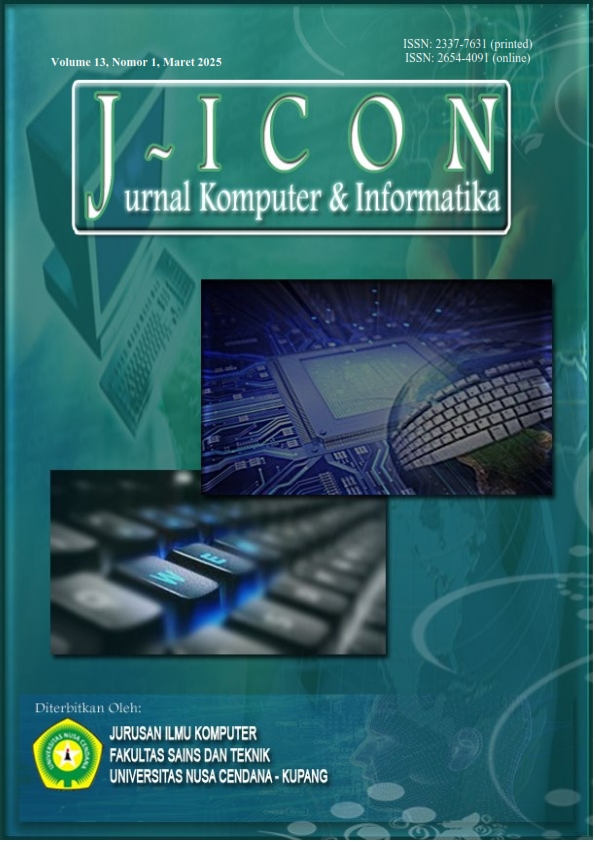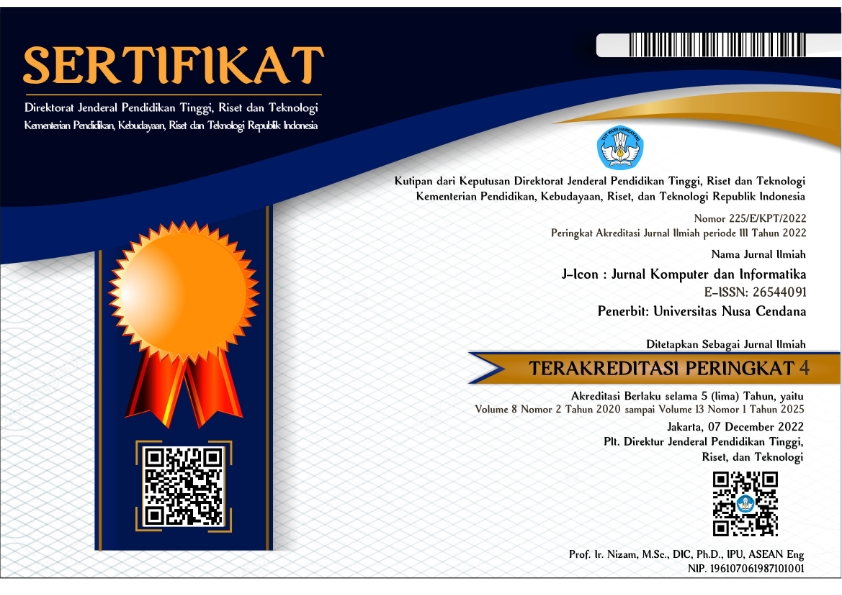UTAUT Analysis of E-learning Users: A Case Study at ABC University
Abstract
The concept of e-learning has been adapted and used in Indonesia since the 1940s, and its development has
continued to progress to this day. The COVID-19 pandemic has led to more comprehensive use of elearning. Unfortunately, ABC University was not prepared for the drastic shift to fully online learning, and
its e-learning system is not yet integrated with the academic information system (SIAKAD). Other
challenges include system bugs and a lack of optimization in discussion forums. As a result, students and
lecturers are not able to use e-learning to its full potential. To identify the root causes of these issues, this
study aims to determine the influencing factors of e-learning usage at ABC University, with the findings
intended to provide recommendations for the university to address the challenges it faces. The study uses a
mixed-method approach, combining quantitative and qualitative methods to process and validate the data.
The UTAUT (Unified Theory of Acceptance and Use of Technology) approach is applied to identify the
factors that affect e-learning usage, with analysis conducted using PLS SEM (Partial Least Squares
Structural Equation Modeling). The study results show that among the five factors examined—Performance
Expectancy (PE), Effort Expectancy (EE), Social Influence (SI), Facilitating Conditions (FC), and
Behavioral Intention (BI)—only Social Influence (SI) significantly impacts e-learning usage, while the
other four factors do not have a significant effect. The recommendations from this study include the need
for system integration between e-learning and SIAKAD to ensure optimal use, as well as conducting
maintenance every three months, facilitating meeting accounts, and adding audio-video features in
discussion forums.
Downloads
References
Technology Solution,” Int. Conf. Educ. e-Learning Innov., vol. 9, no. 66 2, pp. 1–4, 2012.
[2] D. Al-Fraihat, M. Joy, R. Masa’deh, and J. Sinclair, “Evaluating E-learning systems success: An
empirical study,” Comput. Human Behav., vol. 102, no. March 2019, pp. 67–86, 2020, doi:
10.1016/j.chb.2019.08.004.
[3] Badan Pusat Statistik, “Potret Pendidikan Indonesia Statistik Pendidikan Indonesia 2018,” Badan
Pus. Stat., 2018, [Online]. Available:
https://www.bps.go.id/publication/2018/12/06/a65b526c119ce8f799e5ea63/statistik-pendidikan2018.html.
[4] D. Napitupulu, “e-Government Maturity Model Based on Systematic Review and MetaEthnography Approach,” J. Bina Praja, vol. 8, no. 2, pp. 263–275, 2016, doi:
10.21787/jbp.08.2016.263-275.
[5] S. S. Utami and N. Aini, “Pemanfaatan E-Commerce Dalam Upaya Meningkatkan Penjualan
Produk Handycraft Mama Art Deco,” Interv. Komunitas, vol. 1, no. 1, pp. 22–33, 2019, [Online].
Available:
https://www.google.com/url?sa=t&rct=j&q=&esrc=s&source=web&cd=&ved=2ahUKEwjoirfUh
dvyAhUg63MBHVtaDYEQFnoECA0QAQ&url=http%3A%2F%2Fojs.itbad.ac.id%2Findex.php%2FIK%2Farticle%2Fdownload%2F240%2F173&usg=AOvVaw0JdSfMR
mO5PBDYICOTTK30.
[6] E. D. Wagner, “Enabling Mobile Learning,” Educ. Rev., vol. 40, no. 3, pp. 41–42, 2005.
[7] J. S. Asgarpoor, “Asynchronous course design 101,” 2019 Int. Annu. Conf. Proc. Am. Soc. Eng.
Manag. 40th Meet. Celebr. A Syst. Approach to Eng. Manag. Solut. ASEM 2019, 2019.
[8] L. Jiang and J. Zhao, “An empirical study on risk data quality management,” Proceeding 2012
Int. Conf. Inf. Manag. Innov. Manag. Ind. Eng. ICIII 2012, vol. 1, pp. 511–514, 2012, doi:
10.1109/ICIII.2012.6339714.
[9] M. Mosley et al., The DAMA Guide to The Data Management Body of Knowledge ( DAMADMBOK Guide ) First Edition. 2009.
[10] M. Bertoni et al., “A case study on the analysis of the data quality of a large medical database,”
Proc. - Int. Work. Database Expert Syst. Appl. DEXA, pp. 308–312, 2009, doi:
10.1109/DEXA.2009.82.
[11] A. Esposito, Data Quality (Concepts, Methodologies and Techniques). 2006.
[12] Ain, N. U., Kaur, K., & Waheed, M. (2016). The influence of learning value on learning
management system use: An extension of UTAUT2. Information Development, 32(5), 1306–
1321. https://doi.org/10.1177/0266666915597546
[13] Alshehri, A., Rutter, M. J., & Smith, S. (2019). An implementation of the UTAUT model for
understanding students’ perceptions of Learning Management Systems: A Study within Tertiary
Institutions in Saudi Arabia. International Journal of Distance Education Technologies, 17(3), 1–
24. https://doi.org/10.4018/IJDET.2019070101
[14] Meyliana, Widjaja, H. A. E., Santoso, S. W., Surjandy, Fernando, E., & Condrobimo, A. R. (2020).
Improving the Quality of Learning Management System (LMS) based on Student Perspectives
Using UTAUT2 and Trust Model. ICICoS 2020 - Proceeding: 4th International Conference on
Informatics and Computational Sciences, 0–5.
https://doi.org/10.1109/ICICoS51170.2020.9298985
[15] Willaby, H. W., Costa, D. S. J., Burns, B. D., Maccann, C., & Roberts, R. D. (2015). Testing
complex models with small sample sizes : A historical overview and empirical demonstration of
what Partial Least Squares ( PLS ) can offer differential psychology. Personality and Individual
Differences, 84, 73–78. https://doi.org/10.1016/j.paid.2014.09.008
Copyright (c) 2025 Ratna Yulika Go

This work is licensed under a Creative Commons Attribution 4.0 International License.
The author submitting the manuscript must understand and agree that if accepted for publication, authors retain copyright and grant the journal right of first publication with the work simultaneously licensed under a Creative Commons Attribution (CC-BY) 4.0 License that allows others to share the work with an acknowledgment of the work’s authorship and initial publication in this journal.
 Ratna Yulika Go(1*)
Ratna Yulika Go(1*)




